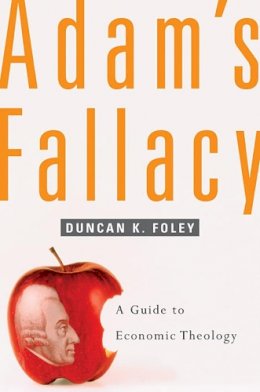13%OFF

Stock image for illustration purposes only - book cover, edition or condition may vary.
Adam’s Fallacy: A Guide to Economic Theology
Duncan K. Foley
€ 33.99
€ 29.67
FREE Delivery in Ireland
Description for Adam’s Fallacy: A Guide to Economic Theology
Paperback. Attempts to explain the core ideas of the great economists, beginning with Adam Smith and ending with Joseph Schumpeter. This book intends to separate the economic sphere of life, in which the pursuit of self-interest is led by the invisible hand of the market to a socially beneficial outcome, from the rest of social life. Num Pages: 288 pages, 7 line illustrations, 1 table. BIC Classification: KCA. Category: (UU) Undergraduate. Dimension: 201 x 132 x 19. Weight in Grams: 246.
This book could be called “The Intelligent Person’s Guide to Economics.” Like Robert Heilbroner’s The Worldly Philosophers, it attempts to explain the core ideas of the great economists, beginning with Adam Smith and ending with Joseph Schumpeter. In between are chapters on Thomas Malthus, David Ricardo, Karl Marx, the marginalists, John Maynard Keynes, Friedrich Hayek, and Thorstein Veblen. The title expresses Duncan Foley’s belief that economics at its most abstract and interesting level is a speculative philosophical discourse, not a deductive or inductive science. Adam’s fallacy is the attempt to separate the economic sphere of life, in which the pursuit ... Read more
Show LessProduct Details
Publisher
Harvard University Press United States
Number of pages
288
Format
Paperback
Publication date
2008
Condition
New
Weight
246g
Number of Pages
288
Place of Publication
Cambridge, Mass., United States
ISBN
9780674027299
SKU
V9780674027299
Shipping Time
Usually ships in 7 to 11 working days
Ref
99-1
About Duncan K. Foley
Duncan K. Foley is Leo Model Professor of Economics at The New School for Social Research.
Reviews for Adam’s Fallacy: A Guide to Economic Theology
Duncan Foley has written a fair-minded and very well-written history of economic thinking organized by the theme announced in his title. He contends that economic thinking has been dominated by fallacious attempts to separate positive analysis from moral judgment. This leitmotif has enabled him to create a unified presentation, which will be very useful to the general reader.
... Read more
... Read more
